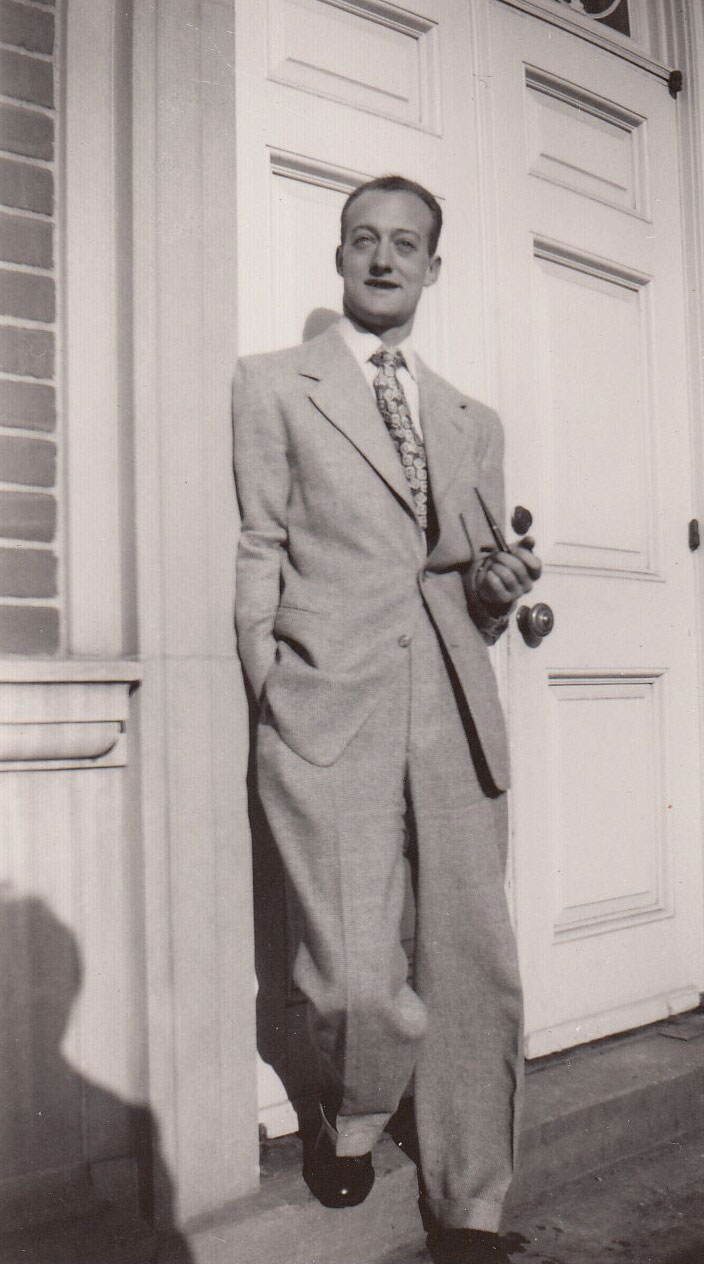About
 Andrew Johnstone, born July 1922, was a native of New York City. At an early age he expressed interest in the arts, and attended the High School of Music and Art for the gifted child in the early 1940’s. Later on he continued to pursue higher education and studied at both the National Academy of Design and Cooper Union. His interest in the arts also extended to dance, a passion he shared with his sister, Marjorie, who would later perform on Broadway. He studied and danced briefly with ballet legends Paul Hakkon, Patricia Bowman and Vitale Fokine. An imposing figure at six foot four, two hundred and twenty-five pounds, Johnstone’s physique was often compared to Michelangelo’s David. Fokine once remarked that “Drew” as he was called, “had the most promise” of any of his emerging new talent.
Andrew Johnstone, born July 1922, was a native of New York City. At an early age he expressed interest in the arts, and attended the High School of Music and Art for the gifted child in the early 1940’s. Later on he continued to pursue higher education and studied at both the National Academy of Design and Cooper Union. His interest in the arts also extended to dance, a passion he shared with his sister, Marjorie, who would later perform on Broadway. He studied and danced briefly with ballet legends Paul Hakkon, Patricia Bowman and Vitale Fokine. An imposing figure at six foot four, two hundred and twenty-five pounds, Johnstone’s physique was often compared to Michelangelo’s David. Fokine once remarked that “Drew” as he was called, “had the most promise” of any of his emerging new talent.
 As a result of WWII, Andrew’s dreams of dancing professionally and pursuing art, were put on hold when he served in the U.S. Army Air Corps. While serving, he was awarded expert marksman. At the war’s end Andrew was drawn back to his first love, art, and attended Syracuse University where he graduated magna cum laude 1950. While at Syracuse, he founded the Society of Art and Letters and was a member of the rowing team. He also went on there to receive a master’s degree and was a member of Phi Beta Kappa and Mensa.
As a result of WWII, Andrew’s dreams of dancing professionally and pursuing art, were put on hold when he served in the U.S. Army Air Corps. While serving, he was awarded expert marksman. At the war’s end Andrew was drawn back to his first love, art, and attended Syracuse University where he graduated magna cum laude 1950. While at Syracuse, he founded the Society of Art and Letters and was a member of the rowing team. He also went on there to receive a master’s degree and was a member of Phi Beta Kappa and Mensa.
 In 1956 Johnstone was awarded a Fulbright Scholarship to teach art in Glasgow, Scotland, due to his merits as a student. It was there he was introduced to Queen Mother at the Court of Saint James at Lambeth Palace. Returning to the States, in the early 1960’s, he became a full time artist. He also taught art briefly in West Hartford and was elected to the Connecticut Academy of Fine Arts.
In 1956 Johnstone was awarded a Fulbright Scholarship to teach art in Glasgow, Scotland, due to his merits as a student. It was there he was introduced to Queen Mother at the Court of Saint James at Lambeth Palace. Returning to the States, in the early 1960’s, he became a full time artist. He also taught art briefly in West Hartford and was elected to the Connecticut Academy of Fine Arts.
Although not much else is known about this artist, his paintings and sculpture have been widely exhibited, including the Wadsworth Atheneum, Munson Williams Proctor Institute, Springfield Museum of Fine Arts, Trinity College, Everson Museum, Bushnell Memorial Hall, Berkshire Museum, University of Hartford, New Britain Museum, University of Edinburgh and the Connecticut State Capital. His work is in the permanent collections of the Everson Museum, Syracuse University, Le Moyne College, Cazenovia College, and many public and private collections.
Creatively, Andrew Johnstone did not limit himself to the use of one media but chose to explore many different techniques and materials. The painter and sculptor also created many colorful and stunning mosaics. Most of Johnstone’s work falls under the banner of the abstract expressionism movement, which is clearly visible in later works. Nonetheless, some of his art depicts both a cubist influence, “Spectators”, and a Burchfield influence, “Solstice”. With the notable exception of his earliest paintings, Johnstone painted mostly on large canvases and Masonite board. His complex mosaics are also of note, as he did not use the traditional small tiles to create a design, instead relying on contemporary “found” materials such as, broken beer bottles and plastic, to bring his pieces to life. Johnstone’s subject matter often times involves eternal themes, mythology, nature, and time.
A portfolio of Andrew Johnstone’s paintings, drawings, collages, and other mixed media works is preserved at Syracuse University’s Archives in the Special Collections Research Center.


